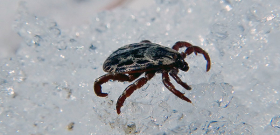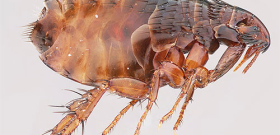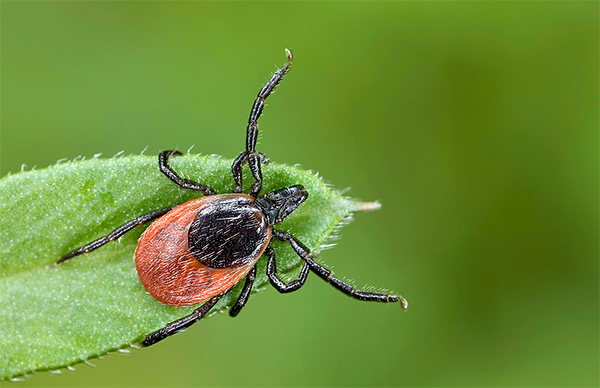
Ixodid ticks (Ixodidae) are highly specialized parasites of vertebrate animals, including mammals, birds, and even some amphibians. The life cycle of a tick consists of 4 morphological phases, two of which are separated by molts.
The first phase is passive, and takes place during embryonic development in the egg stage. Three subsequent stages are associated with the activity of the parasite - this is the phase of the larva, nymph and adult (adult). And although ixodid ticks spend most of their lives outside the host body in the external environment, bloodsucking is the most important condition for the transition of the parasite to the next stage of the life cycle.
Below is a diagram of the life cycle of the ixodid tick:
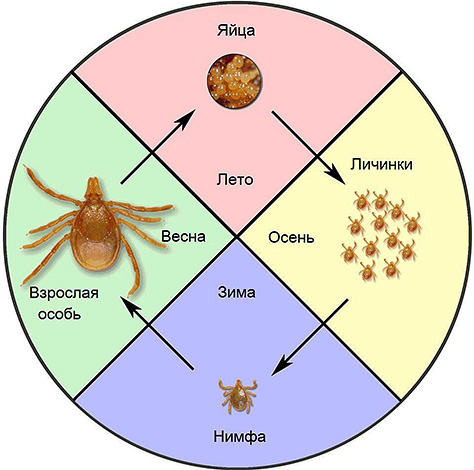
On a note
At a certain stage of development, pathogens of infectious diseases can enter the tick's body, sometimes representing a mortal danger to humans and animals. This point will be considered in more detail below.
Features of reproduction and development of ixodid ticks
Female ixodid ticks are subject to persistent gonotrophic harmony. That is, after each blood saturation in the body of the female, irreversible transformations begin, associated with the preparation for childbirth.

It is interesting
Successful completion of the gonotrophic cycle is possible only in well-fed females, and complete saturation with blood is possible only in inseminated females.
The life cycle of a tick is formed from a strictly organized set of physiological sequences. The female strives for one single biological goal - to lay eggs. To do this, she needs to mate with a male and saturate herself with blood as much as possible in the course of parasitizing on a suitable host.
In natural populations, the proportion of inseminated females is no more than 50-65% of the total number of active female mature individuals.
Under favorable climatic conditions, during the mating season of ticks, the number of inseminated females increases. High population density also contributes to an increase in the number of inseminated individuals.
Animals are attacked by both inseminated and non-inseminated females, as well as males. There are frequent cases when mating occurs in places of suction to the host's body.
Males of most species of ixodid ticks die after one or two matings. Virgin males, under favorable conditions, continue to live up to a year or more.
In the process of mating, which lasts from several hours to several days, the female parasite is not limited in mobility - she continues to hunt and feed. Males are attached to the female with the help of two pairs of limbs, thereby severely limiting themselves, and cannot parasitize during mating.
On a note
Female and male ixodid ticks find each other thanks to special chemicals - pheromones. The highest pheromone activity in the female is observed at the time of saturation with blood. Males catch the smell of pheromones at a great distance and accurately find females even under adverse weather conditions.
The engorged fertilized female increases in size several times.After saturation, she falls away from the host, and the biological mechanism of preparation for oviposition is launched in her body. Depending on the time of year and ambient temperature, the egg-laying process takes from two weeks to three months.
The photographs below show a female ixodid tick during egg laying:
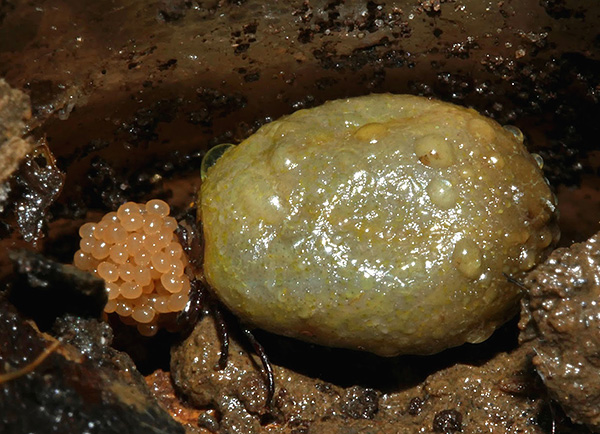
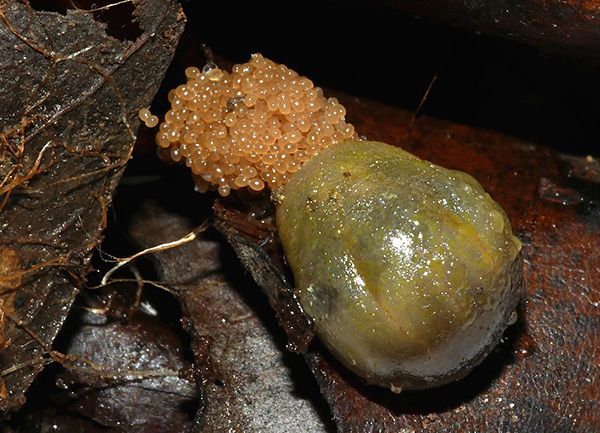
When engorged females enter diapause, the onset of oviposition is delayed until the onset of subsequent activity.
It is interesting
Female ixodid ticks hold the absolute record for fertility among all blood-sucking arthropods. The most satiated individual is able to lay up to 20 thousand eggs.
Ticks lay their eggs in the upper layer of the litter to a depth of no more than 3-5 cm. After the end of oviposition, the females remain alive for several days. After this period, they die due to changes that have occurred in the digestive system and the irreversible decay of internal organs.
Embryonic development of the parasite
A few days after laying, a rapid process of cell division and the formation of a future organism begins inside each egg. At the very beginning of embryonic development, embryonic discs are formed inside the eggs, which in turn become the basis of the future parasite. In the life cycle of the ixodid tick, this is the only non-parasitic stage of development.
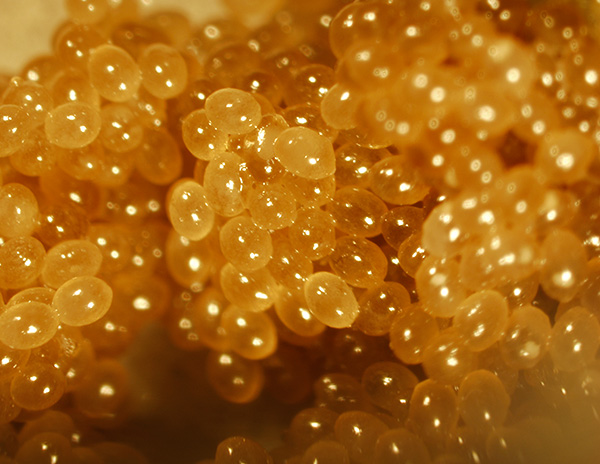
On a note
Females can transmit pathogens of dangerous diseases to their offspring even at the stage of egg formation inside their own body. Even unhatched eggs carry a potential hazard to humans and animals.
For example, goats that feed on bark and branches of shrubs can become carriers of tick-borne encephalitis pathogens after swallowing the basal parts of plants with egg-laying fragments.
The duration of the embryonic development of ixodid ticks largely depends on external climatic factors:
- average daily ambient temperature;
- relative air humidity;
- length of daylight hours.
In some cases, the process of formation of future parasites at this stage of the life cycle can slow down and stretch for several months.
A distinctive feature of late oviposition is that the mechanism of intensive cell division is not activated inside the germinal discs, and the eggs go into wintering. In this case, the hatching of larvae occurs only in the next season, after the onset of a stable positive average daily air temperature and sufficient warming of the forest litter.
At the last stages of development, the embryo is formed into a larva, similar in structure to an adult, but with three pairs of limbs (an adult has 4).
Stages of postembryonic development of ixodid ticks
In the first days of life after hatching, young parasites do not show aggression and spend all the time in shelter, since during this period the final stage of the formation of protective covers and the release of the first waste products from the entrails takes place.
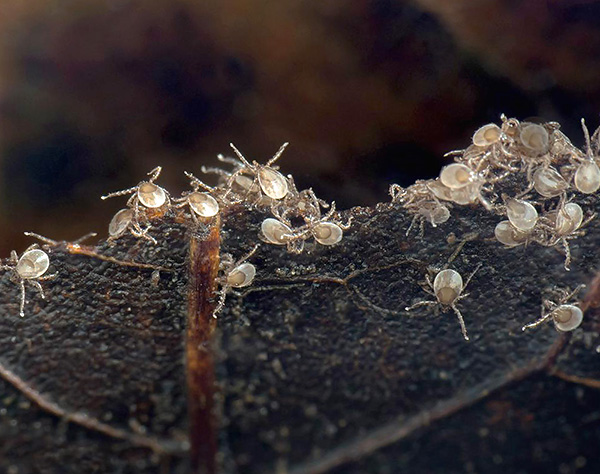
It is interesting
At this stage of development (that is, immediately after hatching from eggs), the larvae of ixodid ticks do not show a complex of behavioral reactions to the appearance of the host for several days.During this period, parasites are in the process of additional development, and in the vast majority of cases they do not stick to the victim even with direct contact.
Upon completion of the process of additional development and complete metamorphosis, young larvae begin to actively look for hosts for feeding. Most often, small burrowing mammals or nesting birds become victims of ixodid tick larvae. The larvae enter their dwellings and stick to immobile animals during sleep or rest.
Larvae feed on blood once - usually for several hours (in rare cases, several days). After saturation, young parasites fall away from the host and begin to prepare for molting - this process takes from several weeks to several months, depending on natural and climatic factors.
During molting, the larvae transform, shed their outer cover (cuticle) and grow a fourth pair of limbs.
Upon completion of the transformation, the tick passes into the nymphal phase of its life cycle. Nymphs are very similar in shape and structure to adults, but do not have full-fledged genitals, therefore they are not capable of reproduction.
The main biological tasks of the nymphal stage of development in ixodid ticks:
- Body weight gain;
- Formation of the rudiments of the reproductive system;
- Formation of rudiments of more developed limbs and a new cuticle.
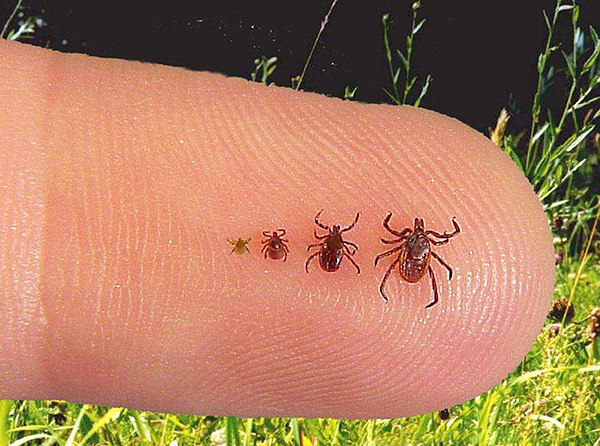
The parasitic stage of the nymphs lasts a little over a day. The hosts for the parasite during this period are usually small animals (hares, hedgehogs, foxes, squirrels) or small cattle.
When saturated, the tick nymph leaves the victim, after which the molting mechanism is activated.This process can take quite a long period of time, and in some cases wintering is possible at this stage.
The determining factors in the rate of molting are temperature and humidity, as well as the length of the day.
At the end of the molting process, the parasites undergo significant internal transformations and turn into adults (adults).
The entire period of postembryonic development takes from one to three years, depending on the natural zone and climatic conditions of the area.
The danger of intermediate forms of the parasite for humans and animals
The host-tick parasitic system does not pose a serious danger to humans as long as third-party biological components (viruses, bacteria) are not included in it.
Unfortunately, ixodid ticks often become carriers of microorganisms dangerous to humans and animals that can cause lethal infectious diseases.
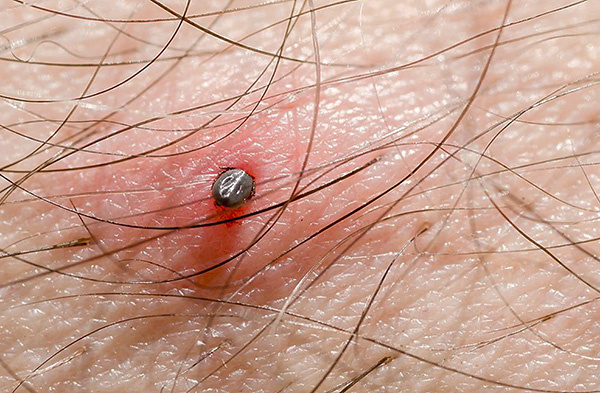
On a note
The most dangerous for humans are the causative agents of tick-borne encephalitis and borreliosis. These infectious diseases affect the human nervous system (and not only it), and sometimes lead to irreversible consequences, including disability and death.
Ticks pose the greatest danger to large warm-blooded animals and humans at the final stage of their life cycle (adults). The intermediate stages of ixodid are usually content with small animals, which are waiting in burrows or nests.
There is also the possibility of a person being infected with dangerous tick infections without the direct bite of the tick. This method of infection is called alimentary.Most often this occurs when raw dairy products are consumed, obtained from domestic animals, which have entered the body of infectious agents.
The spread of tick-borne infections in natural biotopes is focal. The main supporting factor in the focality of the spread of pathogens of borreliosis and encephalitis are stable populations of small rodents. Voles, shrews, and other small warm-blooded animals transmit pathogens to all feeding stages of ticks, which, in turn, transmit the infection to other small rodents.
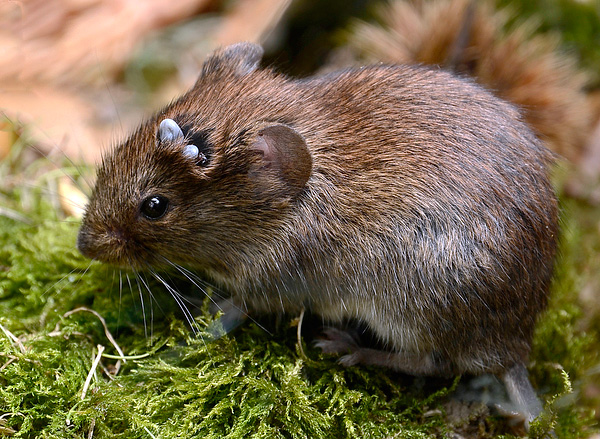
Thus, the stability of the natural focus of pathogens of encephalitis and borreliosis has been preserved for decades.
In such ecosystems, the risk of becoming a victim of a tick, which is a carrier of pathogenic microorganisms, increases tenfold.
Lifespan of the parasite and periods of greatest danger to humans
The development of the tick at all stages of the life cycle directly depends on favorable weather conditions, as well as on the availability of food resources. Each phase of parasite development requires a time interval of at least a year. The total life expectancy of ixodid is 3-4 years.
Successful saturation of the parasite greatly influences the duration of each phase of development. The faster the tick finds a host and feeds, the faster it will molt and move on to the next stage (and the shorter its overall life will be).
Behavioral diapauses are characteristic of adults. Therefore, adults are the highest danger to humans and animals in spring and autumn.
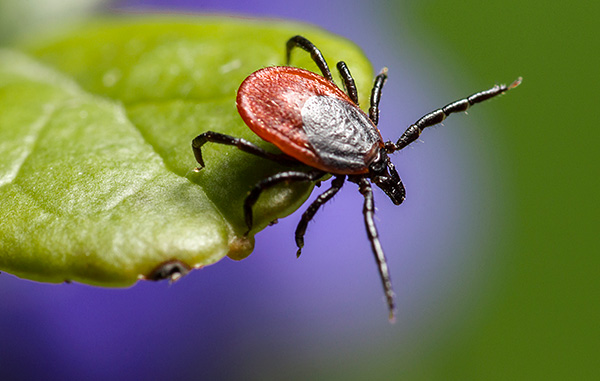
Behavioral diapauses are optional for the nymphal stage, so this life form is dangerous throughout the year, with the exception of winter diapause.
As a rule, the larvae do not pose a direct threat to humans, since they do not have a sufficiently developed mouth apparatus and limbs for successful hunting of large mammals.
On a note
Pasture animals can asymptomatically carry dangerous diseases caused by tick bites. At the same time, the viruses that are in their bodies can be transmitted to humans - for example, when drinking milk or cheese.
Goats and sheep can ingest infected mite larvae in the root canopy. As a result, a warm-blooded animal becomes a natural reservoir for dangerous microorganisms. Thus, even the larval non-parasitic stage can be dangerous to humans.
Interesting video: how ticks lay eggs after being bitten


